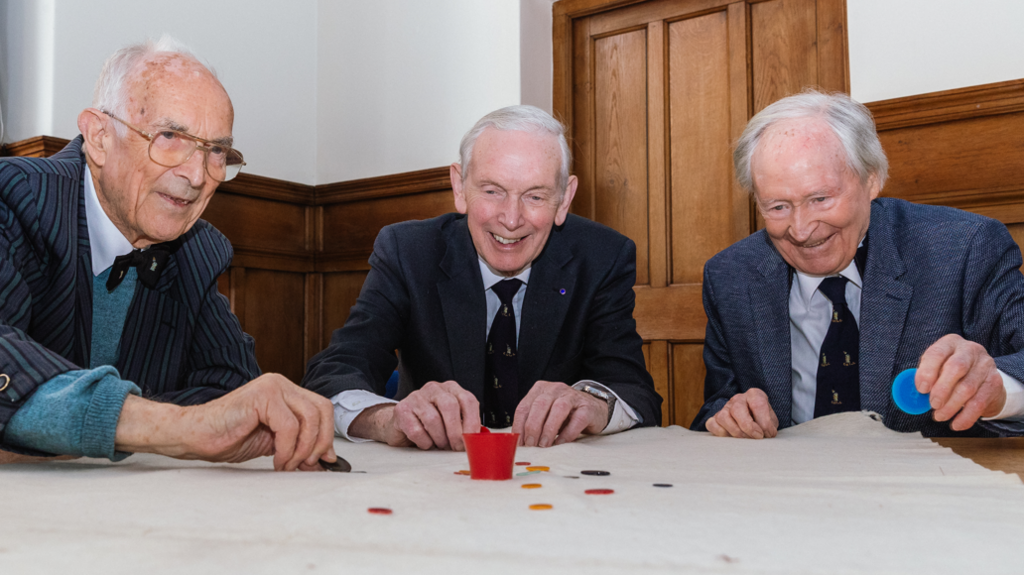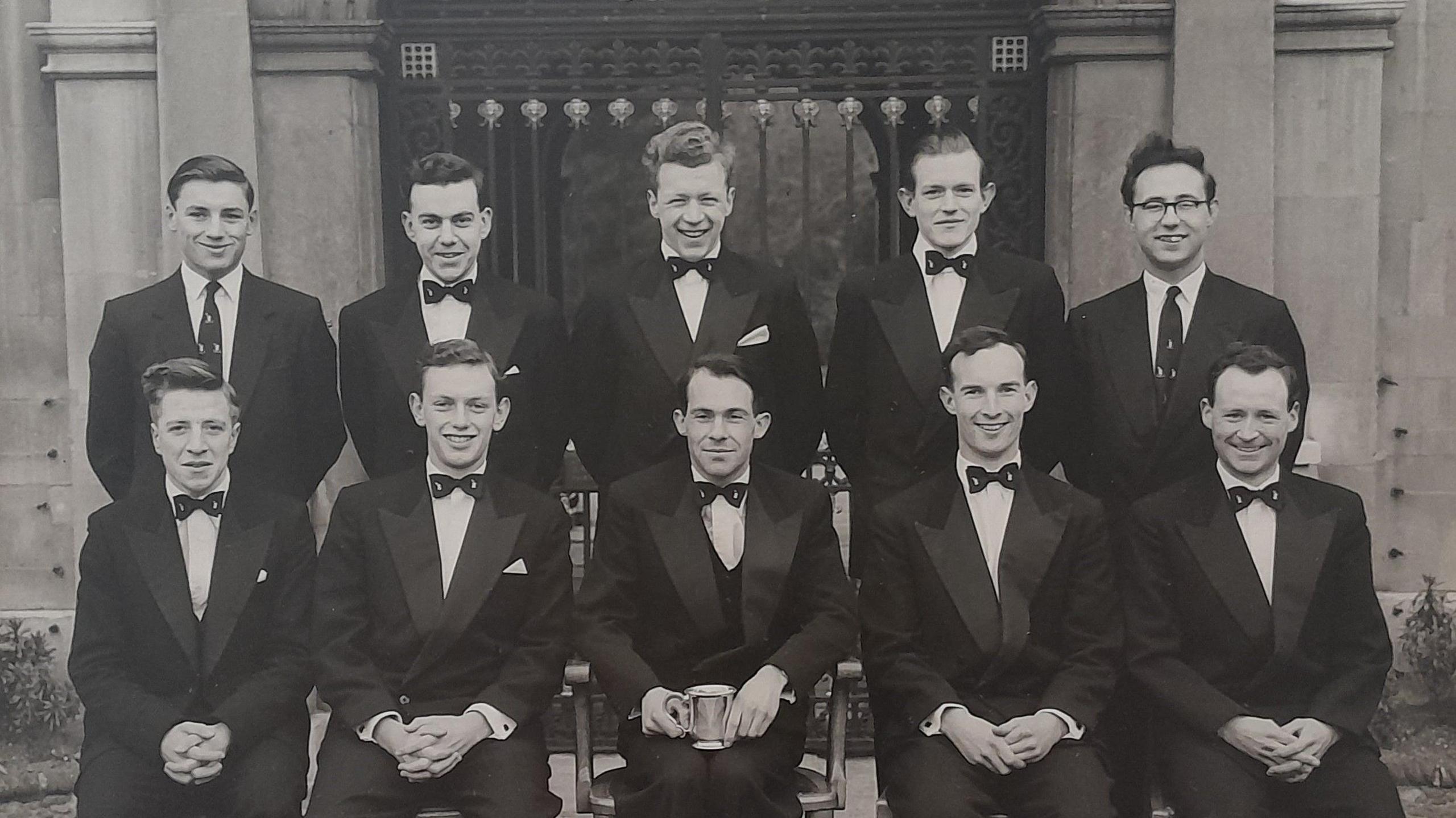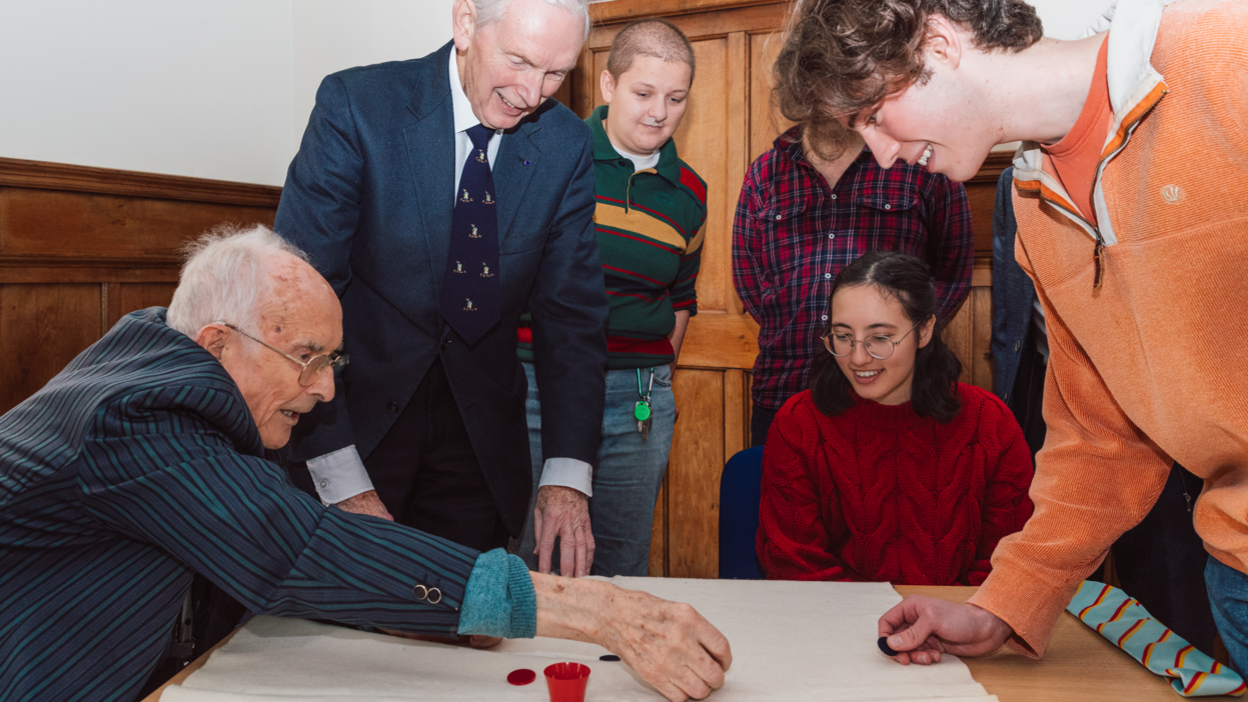Tiddlywinks competition inventors mark anniversary

(Left) Bill Steen and (right) Lawford Howells co-founded the Cambridge University Tiddlywinks Club with others in January 1955, with (centre) Peter Downes joining later
- Published
Three friends who turned the Victorian parlour game of tiddlywinks into a competitive sport so they could represent their university have marked the 70th anniversary of their club.
Bill Steen, 91, said the group had been mostly "hopeless as athletes" and had seen the game as a chance of obtaining a prestigious blue - the highest honour earned by a Cambridge University sportsperson.
Mr Steen and Lawford Howells, 90, co-founded the Cambridge University Tiddlywinks Club (CUTwC) with others at Christ's College in January 1955, with Peter Downes, 86, joining later.
They wrote competitive rules, a thesis on The Science Of Tiddlywinks, coined new terminology and oversaw the creation of the Tiddlywinks Anthem.

The Cambridge University Tiddlywinks Club pose for a photo in 1958
Unlike the usual methods of achieving a prestigious blue, like football, rugby or rowing against Oxford University, the game involved players getting small plastic discs into a cup by pressing one piece against another.
Seven decades later, Mr Steen, who studied chemical engineering at Christ's College and became an academic engineer and Honorary Fellow, said: "It practically cost us our degrees."
A plan was made before Christmas 1954 when he met up with Rikki Martin - a friend from the RAF also studying at Cambridge.
"Apart from Lawford [Howells], we were hopeless as athletes, and we were discussing our dismal chances of obtaining a blue... due to our lack of talent," he said.
"We decided our best chance was to invent our own sport – and preferably write the rules too."
Mr Downes said: "In those days, the sportsmen were kings, the real stars at university, and it was so competitive."

Tiddlywinks has been played since the Victorian times and involves flicking circular-shaped discs, known as winks, into a cup or other holder
After registering with the university and establishing competitive rules, the students wrote to stars, royalty and national newspapers to seek matches, before a challenge was accepted by the Daily Mirror.
Two years later, in 1957, an article unrelated to the game itself appeared in The Spectator, with the headline Does Prince Philip cheat at tiddlywinks, external?.
Sensing a publicity opportunity, the club challenged the Duke of Edinburgh to a match.
He went on to appoint popular comedy group The Goons as his royal champions, with a contest taking place the following year.
Prince Philip's message to tiddlywinks contestants. Video, 00:01:18
- Published4 March 2023
Six hundred tickets for The Royal Tournament at The Guildhall, Cambridge, sold out in two hours, and the game ended with a win for Cambridge.
It became national news, with Mr Steen describing it as "like living a fairy tale story".
He said: "You get a half blue if you're doing it [competing] for netball or something like this... we got a quarter blue for tiddlywinks - I think it's the only quarter blue going."

"We still sing the anthem, and it's a fun way to represent your university, but part of the joke is how seriously it actually gets taken," said student Emmy Charalambous
The first British Universities Championship took place in 1961 with teams playing for the Silver Wink, which universities still compete for today.
Mr Lawford said: "We could never have imagined it would take off the way it did – it's incredible. The real spark was The Royal Tournament - that put us on the map."
The trio said it was "absolutely amazing" tiddlywinks was still going today.
Emmy Charalambous, 21, the current CUTwC president who is studying classics at Trinity College, said: "We've all heard the incredible story, but it was great to see them and hear it from them - how they took a Victorian parlour game and turned it into a competitive sport."
Additional reporting by PA Media.
Get in touch
Do you have a story suggestion for Cambridgeshire?
Follow Cambridgeshire news on BBC Sounds, Facebook, external, Instagram, external and X, external.